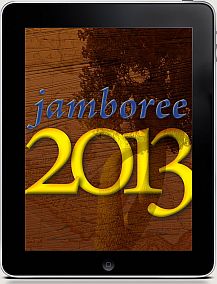Jamboree 2013: Know the Audience for Your Family History Book
Biff Barnes
One of the best things about attending a genealogy conference is getting the opportunity to talk with people about their interests and the projects they are working on. We are at the Southern California Genealogy Jamboree this weekend and I have had a chance to listen to people talk about family history books they are writing.

Often people describe how they are documenting generations of ancestors by creating a fully-sourced book tracing the family chronologically through the generations. But at Jamboree several family historians wanted to break out of that traditional mode. They had embraced the advice know your audience. The result was some very unique approaches to creating a family history book. Let’s look at some:
Two women were writing for young grandchildren (under 10 years old). They wanted to create books that were highly visual with bright colors, limited text, graphics, and family photos. One of the women had a specific eight year old grandson in mind. He is named for his great-grandfather so the book focuses on the who great-grandfather was with photos of his birthplace and home, business, and brief anecdotes about his life. The book is intended as a read aloud which the grandson will also be able to read on his own. What a great way to get kids interested in their family history!
Another gentleman was writing a book about his Jewish ancestors’ escape from the Nazis during the 1930s. He’s documenting their three-year odyssey through Europe with maps of their route, photos of places they stopped and accounts of the of people who helped them along the way. It sounds like an adventure story. It’s also a good example of choosing a short slice of family history to provide insight about an important part of the family’s heritage.
An ambitious family historian who has accumulated a mountain of research data talked to us about his planned series of very short books. “I have got a lot of material,” he said, “But, if it’s a tome it will make a great coffee table. Unfortunately people don’t open a piece of furniture.” His solution is to write short books of 25-50 pages which emphasize the stories of ancestors at particular moments in history. The first will be set in Revolutionary War New England. “I want something that people can pick up and read through quickly.” Once again the goal was to draw non-genealogists into the family history and create interest which might lead them to look more deeply at the subject.
Each book was a unique idea. They were reminders that there many ways to preserve family history. The important thing is to think about who you will be writing for and what will be most interesting to them.